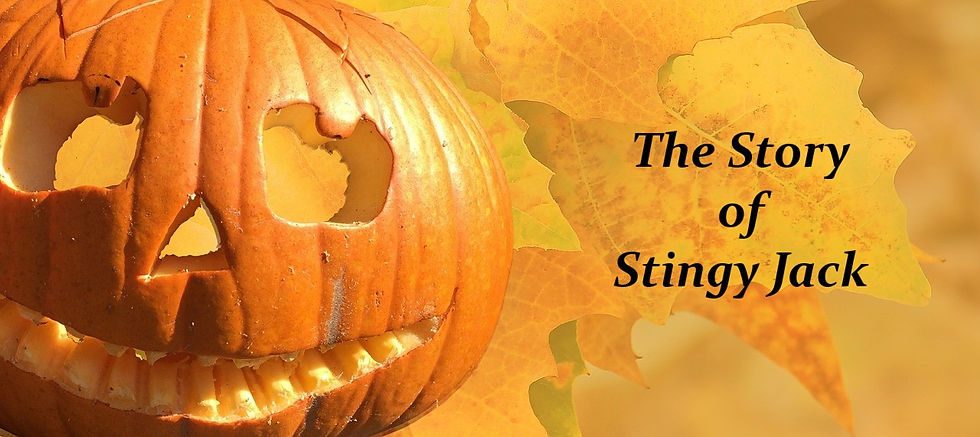Why Do We Carve Pumpkins for Halloween?
- halloween sisters
- Jul 5, 2018
- 3 min read
Halloween as we know it is a uniquely American thing. However, it is made up of many different traditions from around the world. The history of the jack o lantern is no different. It’s roots stretch back to pagan Irish traditions and stories. The oldest being the folklore tale of Stingy Jack dating back to the 1600’s. Like with most oral folktales, the details change over the years and there are multiple versions floating around the internet.

The Legend of Stingy Jack
There was once a blacksmith that lived in a small village in Ireland. He was cunning and cruel and loved to drink. He never paid for anything if he could get away with it. The other villagers disliked him and called him Stingy Jack.
One day, as Jack was walking up a road, he came across the Devil, who had come for his soul. Jack being a clever man, asked the Devil if he could get one last drink at the pub. The Devil agreed and they walked down to the local pub and had a drink together. Jack told the Devil that he didn’t have any money to pay for the drinks. He told the Devil to change into a coin so he could pay the bartender. The Devil obliged and turned himself into a coin. Instead of paying the bartender, he put the coin in his pocket next to his silver cross. The Devil couldn’t change himself back and was trapped in the shape of the coin. Jack demanded the Devil leave without taking his soul for another year. The Devil knew he was beat and agreed to Jack’s demand.
A year later the Devil again came to take Stingy Jack’s soul. Jack agreed to go with the Devil. But first Jack asked the Devil the climb a nearby apple tree and let him have one last apple for his aching belly before being taken to Hell. The Devil agreed. However, when he was up the tree, cunning Jack carved a cross into the tree, trapping the Devil again. Jack demanded that the Devil leave him be for another ten years. The Devil knew he had been beaten again and agreed to Jack’s demand.
Eventually, Jack died. He went to the gates of Heaven, but Saint Peter denied him entrance because of his life of wickedness. Jack then went to Hell and begged entrance. The Devil had made good on his promise and refused to let Jack enter. The Devil took pity on Jack and gave him a burning ember. He told Jack it would light his way through the netherworld for all eternity. Jack put the ember in a turnip he had in his pocket and left the gates of Hell to wander for all eternity. Jack became Jack of the lantern. This name was eventually was shortened to Jack o lantern.

For many years people believed the lights they saw in the bogs and marshes were the light of Stingy Jack.These lights have had many names, Including will o the wisp, bog lights, corpse candles, or foolish fire. Today we understand the lights are actually caused by spontaneous combustion of the gas released by the decaying plants.

The Irish and Britains were also known to carve turnips, beets and potatoes during the harvest festival of Samhein (pronounced Sowin). Samheim was the celebration of the end of summer and the beginning of the new year on November 1st. It is said they did this to protect themselves from evil spirits that came lurking while the veil was thin. People also liked to take their little lights and scare their friends and neighbors. The tradition eventually evolved, and children would take their turnip lanterns and beg the neighbors for “soul cakes.”
These traditions and stories came to America through the Irish and British immigrants during the 1800’s. They replaced their turnips and potatoes with pumpkins which were plentiful in America. They were also large, easy to carve, and ripened in the autumn. This tradition has lasted in America for over 150 years.








Comments